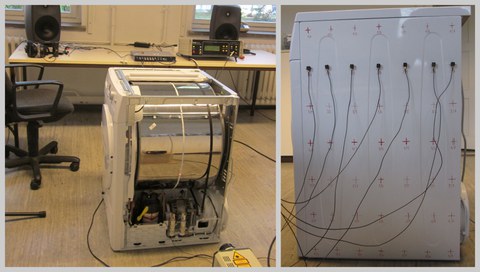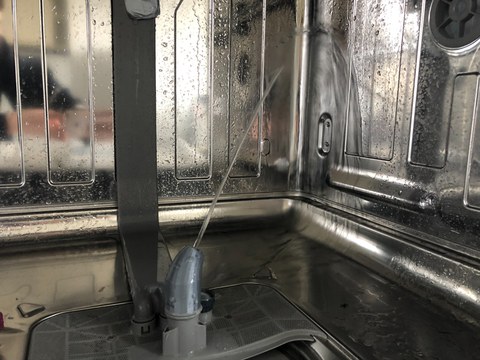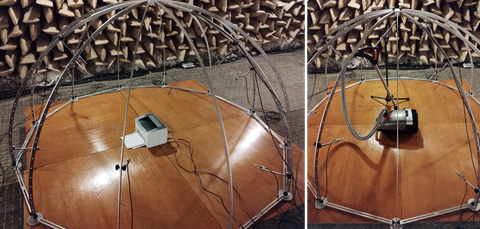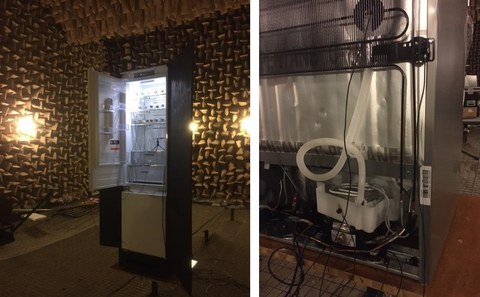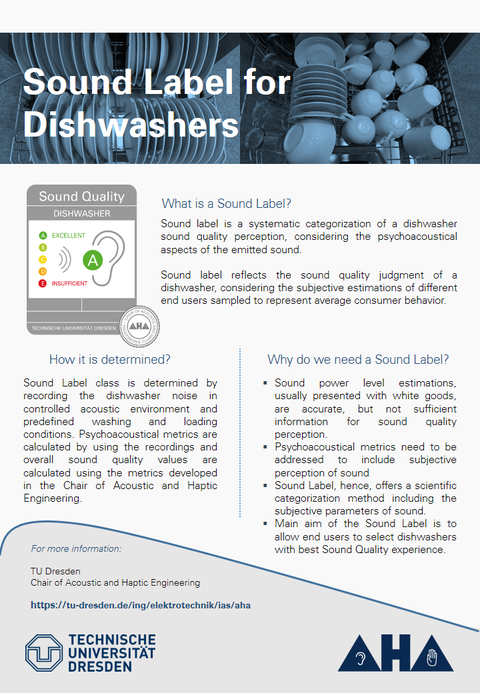White Goods Acoustics
Noise emitted from household devices strongly effects the soundscape of our living environments. Besides being information carrier, about the operational condition of the device as well as quality descriptors, sounds emitted from household appliances are particularly considered as annoying or unpleasant. Users are becoming more aware nowadays, about the sound that they are exposed to, and consider the noise as an input parameter for their final purchasing decision making. For that reason, sound quality studies of household devices become more and more important, as they help producers to gain advantage in market.
Quality, as a term, mostly within the industrial context, represent suitability of a product regarding to a defined expectations of end user. In a similar approach, the term “Sound Quality” represents the adequacy of a sound attached to the product, when the auditory event is perceived by the user and a judgment is done based on the expectations of the user in the situational context. From this perspective, it is important to understand the physical attributes of sound which corresponds to the perception of high quality, mainly by using the means of psychoacoustics.
Different household appliances are in the research interest of the Chair of Acoustic and Haptic Engineering, such as vacuum cleaners, washing machines, dishwashers, tumble dryers, refrigerators, electric shavers, coffee makers, kitchen hoods and etc. For all of these devices, vibro-acoustical research is conducted to decrease the overall sound levels, as well as listening tests to understand the annoyance perception for sound quality research.
In the recent years, European Energy Label has influenced our lives, providing the power consumption of home appliances in a clear and standardized manner to the end users, allowing them to use that information for their final purchasing decision. Energy Label also includes the sound power level information of most of the household devices. Although the sound power level is an important parameter, it does not exactly characterize the human perception of product sound. Psychoacoustical parameters need to be addressed for considering the perceptive judgments of the customer.
For that reason, a Sound Label is designed in the Chair of Acoustic and Haptic Engineering, considering the annoyance estimations of the household appliances. Recently, Label is designed for the dishwashers in particular, whereas research is still going on for the development of the Sound Label for the other household appliances.
Sound label is a systematic categorization of a household appliance sound quality perception, considering the psychoacoustical aspects of the emitted sound. It reflects the sound quality judgment of a device, considering the subjective estimations of different end users sampled to represent average consumer behavior.
Contact
Mitarbeiter
NameMr Dr.-Ing. Serkan Atamer
Send encrypted email via the SecureMail portal (for TUD external users only).
Professur für Akustik und Haptik
Professur für Akustik und Haptik
Besucheradresse:
Barkhausenbau, Raum BAR 62 Helmholtzstraße 18
01062 Dresden
None

